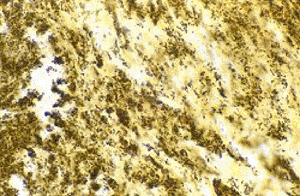New Facilities Support Clinical Testing Services for Bartonella
By LabMedica International staff writers
Posted on 23 Jun 2011
A new laboratory will support expansion of clinical testing services for hard-to-detect bacteria such as Bartonella.Posted on 23 Jun 2011
The most effective means of detecting active infection of Bartonella spp. involves the combination of enrichment culture in Bartonella alpha-Proteobacteria growth medium (BAPGM) followed by polymerase chain reaction (PCR) amplification and DNA sequence identification and detection of organism-specific DNA sequences.

Image: Bartonella henselae in cardiac valve of a patient with blood culture-negative endocarditis. The bacilli appear as black granulations (Photo courtesy of Warthin Starry).
Galaxy Diagnostics' (Research Triangle Park, NC, USA) EnrichmentPCR improves accuracy of Bartonella detection by more than a factor of 4 over other available techniques. Bartonella is extremely difficult to detect; conventional tests suffer a high degree of false negatives, leading to missed diagnosis and treatment.
The new laboratory facility was opened by Galaxy Diagnostics, which is seeking approval under the Clinical Laboratory Improvement Act (CLIA), a necessary step in performing tests on human blood samples. "Our new facilities will enable us to meet the growing demand for our EnrichmentPCR test for Bartonella. People are becoming increasingly aware of the dangers posed by [these] bacteria through news reports, emerging papers, and articles," said Galaxy president Amanda Elam, PhD.
The key agent in cat scratch disease (CSD), Bartonella henselae is increasingly implicated in a wide range of chronic patient conditions affecting the central nervous system, joints, and vascular system. Transmission of the bacteria from host animals to humans is thought to occur most often by flea/tick bites and by animal bites and scratches.
Related Links:
Galaxy Diagnostics














